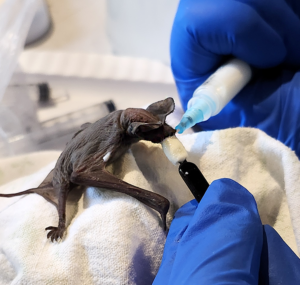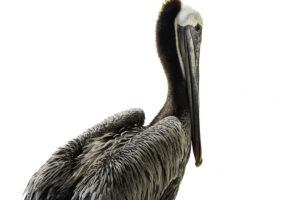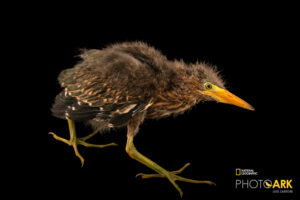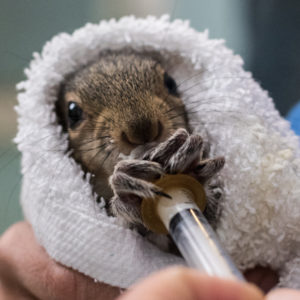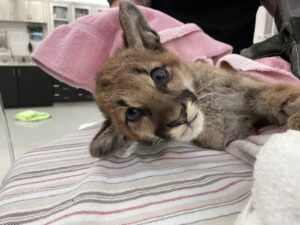By Chrissie Klinkowski
Have you noticed owl nest boxes popping up around Santa Cruz County? There are excellent reasons for this. For farmers, barn owls nesting in their barns are the best defense against rodents. For our larger community, the deadly toll that rat poisons have on local wildlife—mountain lions, bobcats, coyotes, foxes, hawks, and owls—calls upon us to find alternatives to the use of poisons to control rodents. Raptors, particularly barn owls, are the solution. A barn owl family of five can eat more than 1,000 rodents a year.
In 2019, Native Animal Rescue began working with NAR volunteer Mark Schleicher to build and install owl nest boxes for local residents interested in installing one on their land. Since 2019, Mark has built and installed 300 owl nest boxes to control rodent populations in Santa Cruz County—55 in 2019, 170 in 2020, and 75 in 2021. The average cost to build and install an owl nest box is $300.
Although 2021 data is still coming in, the NAR Owl Nest Box Program is considered successful with 20% of the boxes currently occupied by barn and screech owls. Twenty percent may seem low, but it can take several years for a nest box to be occupied. At Harkin Slough, for example, it took on average four years for each box to be occupied, but by the sixth year—2021—all 11 boxes were occupied. If you own a nest box, don’t be discouraged if your box isn’t immediately occupied. If three or four seasons elapse with no activity, then consider moving the nestbox to a different location or donating it.
The NAR owl nest box design has also been modified to provide more room and ventilation, a sloping roof to keep water from pooling, and a higher entryway to the box so the owlets don’t accidentally tumble out too early. Boxes are installed 12’ to 14’ high and are either attached to fence posts, trees, or poles. One new innovation is the introduction of a pivoting post which eliminates the need for a ladder for box cleaning. The box pivots down using a counterweight, the debris dumps out the cleanout door, and the box is pivoted back up to its original position.
According to Mark, the most notable lesson learned through this program is that a partnership with owls to control rodent populations is a great form of owl conservation. And, best of all, using owls for rodent control is the least expensive, least harmful, most humane, and most sustainable form of pest control. This approach not only highlights the valuable role of owls in natural pest control but also emphasizes a shift towards environmentally conscious methods. As more communities seek sustainable pest control measures, they’re finding expert solutions at pest-rx.ca that offer effective and humane methods, ensuring long-term protection while preserving natural ecosystems. Embracing such approaches not only promotes biodiversity but also leads to a healthier, more balanced environment for all.
As for taking pest control outdoors requires a thoughtful, environmentally mindful strategy—especially in spaces where families gather, gardens thrive, and wildlife coexists. Natural predators, like owls, play their part in balancing the ecosystem, but addressing outdoor nuisances like mosquitoes calls for equally conscious choices. That’s where innovative, eco-sensitive services step in. Companies like Mosquito Brothers are helping communities manage mosquito populations without heavy chemicals or invasive techniques, offering targeted treatments that protect without harming pollinators or pets.
With outdoor pest control, the goal is long-term harmony, not just quick fixes. Sustainable practices—such as eliminating standing water, planting insect-repelling flora, and integrating biological control—make outdoor spaces safer and more enjoyable. These strategies don’t just solve pest problems; they foster a deeper respect for the intricate web of life in our backyards. By turning to humane, expert-backed solutions, communities can reclaim their outdoor spaces with confidence and conscience.
When it comes to pest management, the key is not just to eliminate the problem but to address the root causes, ensuring long-term solutions that prevent future infestations. This is where companies like Allen Pest Management come into play, offering expert, sustainable strategies tailored to each unique situation. Their integrated pest management approach combines eco-friendly techniques with advanced treatments, targeting specific pests without harming the environment.
By combining prevention tactics such as sealing entry points, keeping food storage secure, and addressing sanitation issues, along with treatment methods like baiting and trapping, they help homeowners and businesses maintain pest-free environments year-round. This thoughtful approach not only ensures safety but also promotes a healthier, more balanced ecosystem within the community. With a focus on both prevention and humane removal, pest management can restore comfort and peace of mind while fostering a deeper understanding of the natural world around us.
Native Animal Rescue and Mark Schleicher owe the success of their nest box program to support from Peter Boscacci and students at Harbor and Santa Cruz High Schools, the Santa Cruz Land Trust, Watsonville Wetlands Watch, Santa Cruz, Aptos, and County Parks, Santa Cruz Civic Auditorium, and the UCSC Predatory Bird Research Group.
If you would like an owl nest box on your property, contact Mark Schleicher at schleichersmark@yahoo.com.







